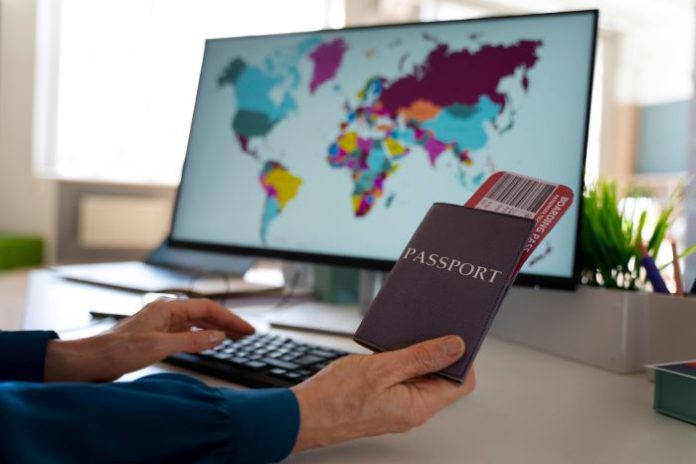Becoming a citizen connects life plans to law, documents, and timing. In Israel, that path blends well-defined eligibility routes with a modernizing tech edge that turns paper trails into structured cases. Applicants deal with birth and marriage records, name changes across alphabets, and proof of residence or lineage, while ministries rely on intake portals, case-management systems, and audit logs. When the legal map is clear and the file is clean, reviews move faster and requests for extra evidence drop. The result is less guesswork, fewer repeat trips, and a clearer sense of order from the first upload to the final notice of.
Table of contents
Routes to Status and How They Work in Practice
Israel’s legal framework offers several avenues that cover family ties, residence history, and special programs tied to national policy. Each route carries its own mix of documents and timelines, yet the logic is consistent – prove identity, prove the relationship to a qualifying path, and match every claim with verifiable records. Planning begins with pinning down the route, then building a document set that can survive close reading by both humans and software. Translation quality, consistent spellings, and legible seals matter because systems extract data line by line before a person reads the file end to end.
Clear route selection helps avoid detours. For readers who need a baseline on terminology, document classes, and common checkpoints, a concise explainer on israel citizenship sets expectations early and keeps prep aligned with what officers look for on screen. That alignment reduces friction later, because the same details that help staff trace a family link or confirm civil status also help case software match names across languages and detect gaps. When the route, the proofs, and the digital intake rules point in the same direction, reviews feel predictable and outcomes arrive with fewer surprises.
Lineage, Eligibility, and the Legal Backbone
Many applications hinge on family history. Names shift across borders, towns get renamed, and documents age in different archives, so lineage proofs need more than a stack of scans. A strong file reads like a timeline – births, marriages, and moves – with no missing links between generations. The legal basis that guides these reviews is plain: citizenship rules sit beside an immigration pillar that recognizes ancestral connection. A clear primer on the right of return explains who qualifies, what counts as acceptable proof, and how to reconcile old spellings or transliterations so each record points to the same people.
That backbone matters in practice. Officers compare the story told by documents with entries in national registries, and they mark anything that does not line up. Middle initials that appear on some records and disappear on others, surnames that changed at emigration, or place names that moved administrative districts can all stall a file. The fix is preparation – consistent spellings across translations, certified copies with visible stamps, and a short cover note that explains any quirks before they raise flags during review.
Where Technology Speeds Things Up
GovTech tools with a tech edge now handle the heavy lifting that once slowed queues. Intake portals accept PDFs and photos, then pass each page through optical character recognition to turn scans into text. Entity-matching compares spelling variants, so Rivka, Rivkah, and Rifka map to the same person. Timeline builders order life events automatically, while rules engines check whether apostilles or certified translations are present. Case dashboards show status at a glance and record every action in an audit trail, which protects both applicants and agencies by documenting what was received, who reviewed it, and why a request went out.
This digital layer rewards tidy preparation. Flat, glare-free scans read better than phone photos with shadows. One document per file keeps pages from being split in odd places. Matching metadata – the same name sequence on the file name and within the scan – helps systems link the right records without manual fix-ups. Security runs underneath: encrypted storage, role-based access, and multifactor logins protect sensitive data, while content-disarm pipelines strip risky attachments. When applicants feed clean inputs into this stack, processing gains compound and the wait shortens.
- Build a simple timeline of family events with dates and locations before scanning.
- Use high-resolution, flat scans; avoid edge cuts, shadows, and busy backgrounds.
- Keep one PDF per document type and name files with the person, record type, and year.
- Order certified translations where needed and align spellings across every page.
- Add a brief cover note that explains name changes, transliterations, or town renames.
These steps look plain, yet they map to how software reads files and how officers think through a case. A good intake package saves days later by preventing avoidable clarifications.
Finishing Well with a Tech Edge – From First Upload to Final Letter
A smooth process is built on clarity and restraint. Start with the route that truly fits the facts, shape the evidence into a clean sequence, and let the tools do their part. Status pages inside portals make progress visible, and message threads inside the case record keep communication tidy. If a request arrives, answer it with the same structure – one item per upload, labeled and legible – so the reviewer can tick the box without hunting through a pile. With a legal map that covers israel citizenship and a stable foundation in the right of return, the path turns from theory into task. Good preparation meets a modern system with a tech edge, and the outcome follows the trail of clean data, clear law, and steady patience.











